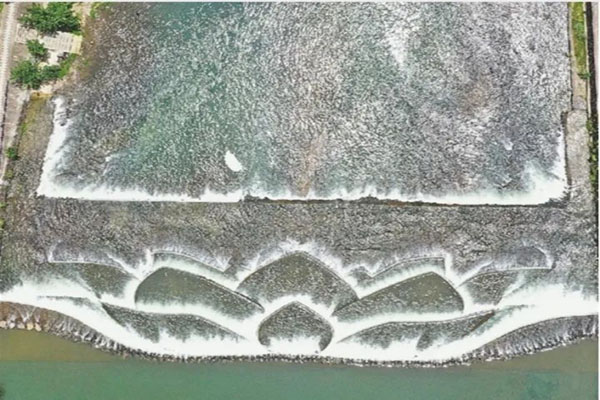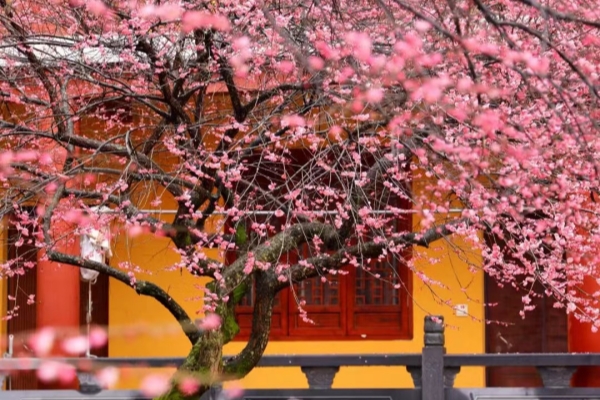Zhejiang explores path to common prosperity
Located at an altitude of 1,000 meters, Lin's hometown Daji Township is in Jingning She Autonomous County, east China's Zhejiang Province. Due to its remote location, the county had suffered poverty for a long time.
However, life in Jingning has drastically improved. In the past decade, Zhejiang, an economic powerhouse and a demonstration zone for achieving common prosperity, has achieved more balanced and coordinated development in its exploration efforts for common prosperity and modernization.
COORDINATED DEVELOPMENT
In 2002, Zhejiang launched a pairing-up scheme between the developed coastal areas and the underdeveloped mountainous areas in the province to narrow the regional development gap and promote coordinated development.
Thanks to the move, Jingning's water bamboo shoots could easily reach the market in coastal areas. Today, the annual income of Lin's family from growing the vegetable alone increased to about 100,000 yuan (about 14,300 U.S. dollars).
Meanwhile, fresh seafood from the coastal areas also finds its way more smoothly to inland counties like Jingning, making the scheme a mutually beneficial one.
"I have more than 10 mu (about 0.67 hectares) of water bamboo shoots. I hope I can sell them at a good price this year," Lin said with a smile, wiping sweat from her face.
Lin's story gives a glimpse into Zhejiang's relentless pursuit of common prosperity.
From 2012 to 2021, the incomes of both urban and rural residents in Zhejiang more than doubled, and the province saw its GDP top 7 trillion yuan and its per capita GDP exceed 110,000 yuan in 2021.
As a key indicator of balanced development, the income ratio between urban and rural residents in Zhejiang decreased from 2.37 to 1 to 1.94 to 1 in the past decade.
DYNAMIC TRANSFORMATION
At Wu Xisheng's mold factory in Huangyan District of Taizhou City, clicking sounds came from his workshops where molds used to make baijiu (distilled spirits) packaging were being manufactured.
Huangyan, over 200 km from the provincial capital Hangzhou, is known as "the home of molds" in China.
From small objects such as buttons, liquor boxes, and soap holders to bigger ones such as molds for plastic auto parts, Huangyan's mold industry has been vibrant for more than 50 years.
Meanwhile, due to the province's high-quality development of the industry, numerical control machines replaced manual equipment, with machine accuracy maximum error not exceeding 0.01 mm.
Huangyan also became an indispensable part of the global industrial chain and a place to realize dreams for people like Wu.
"As long as you dare to venture, you'll find opportunities everywhere," said Wu, who started as an apprentice at a mold factory in Huangyan 19 years ago and now owns a factory with an annual output value of some 5 million yuan.
In addition, various flourishing industries in the province paved the way to a better life for the people.
Hangzhou Wahaha Group, a leading domestic beverage enterprise founded in 1987, is focusing on smart manufacturing and more high-value-added products.
The company has decided to invest nearly 500 million yuan in the construction of a future factory in Wencheng County located in the province's southern mountainous areas, which is more than 400 km from Hangzhou.
The future factory will become an intelligent beverage production base for the company, and introduce an advanced aseptic production line, according to Zong Qinghou, the company's chairman.
"We hope to build the Wencheng project into a model project of common prosperity, and lead the industrial chains of 26 counties in the mountainous areas to achieve high-quality development by providing jobs and boosting related local industries," Zong said.
NEW JOURNEY
Wall paintings with strong color contrasts can be seen everywhere in Yudong Village, Quzhou City in western Zhejiang. Among the village's over 800 residents, more than 300 participated in the creation of village-themed paintings.
Yu Yunmei, a villager, did not expect that painting could change her life.
"In the past, when my husband went out to work, I stayed in the village and took care of our orange orchard," Yu said. Now, by practicing painting for years, she has become a member of the Zhejiang Artists Association, earning more than 100,000 yuan a year just from wall painting.
In Yudong, painting not only fills farmers' pockets but also enriches their spiritual life, enabling the locals to participate in and host various kinds of art and painting exhibitions.
Zhejiang makes it clear that to promote common prosperity, the key is to enhance people's sense of happiness.
Over the past decade, Zhejiang's equalization of basic public services has exceeded 98 percent. The province is pooling efforts to further narrow the development gap between urban and rural areas and basically achieve common prosperity in 2035.
As a new journey begins, more people are joining in. In Daji Township, 35-year-old agricultural entrepreneur Xu Kesong is using digital greenhouse technology to help villagers plant more fruit and vegetables.
Quitting his job and going back to Daji in 2021 from Hangzhou, Xu feels positive about the future of Daji.
"I hope we can not only sell agricultural products but also introduce a deep processing industry chain so that more people can find jobs close to their homes," said Xu.

 Lishui establishes intelligent biodiversity monitoring system
Lishui establishes intelligent biodiversity monitoring system New fungus species discovered in Qingyuan
New fungus species discovered in Qingyuan Lishui transforms weirs to aid fish migration
Lishui transforms weirs to aid fish migration